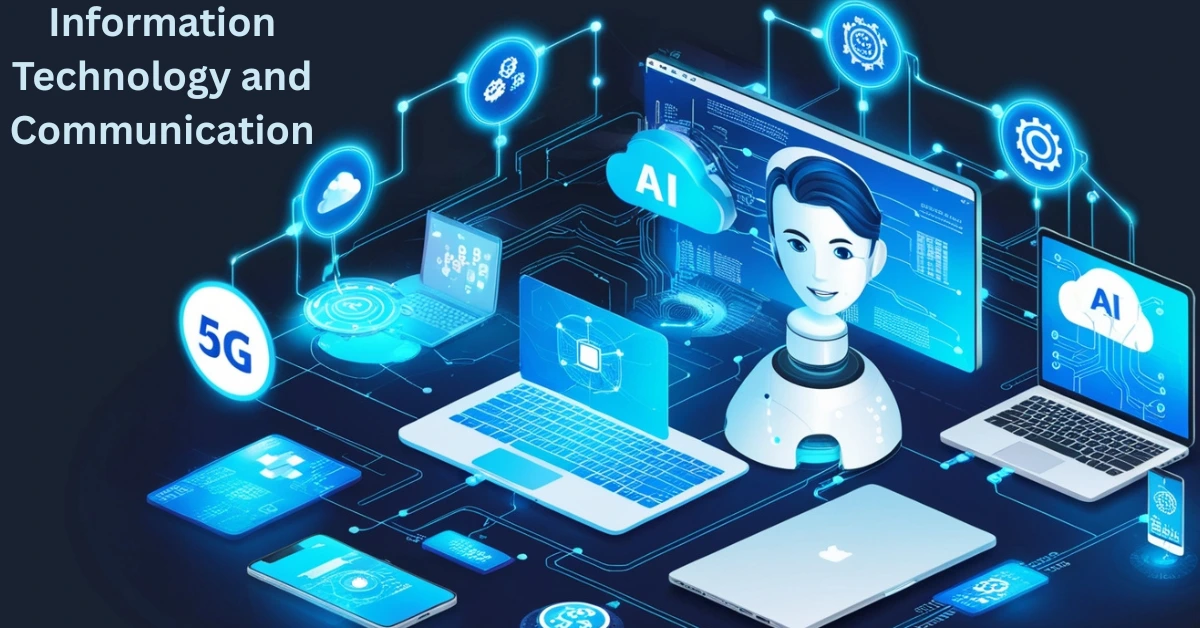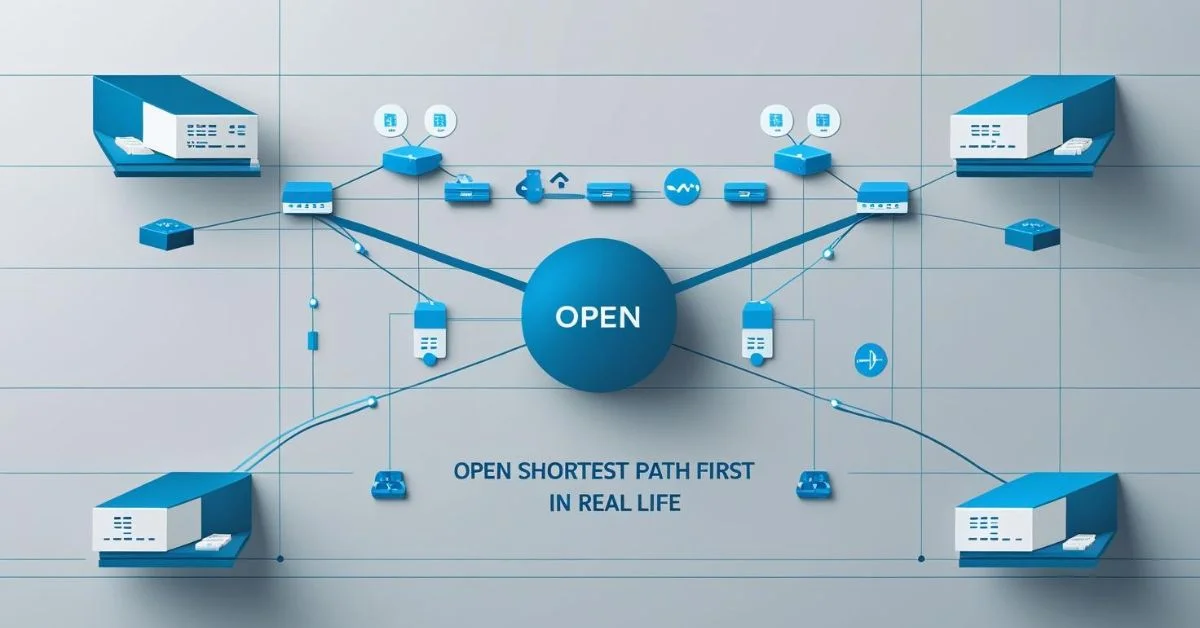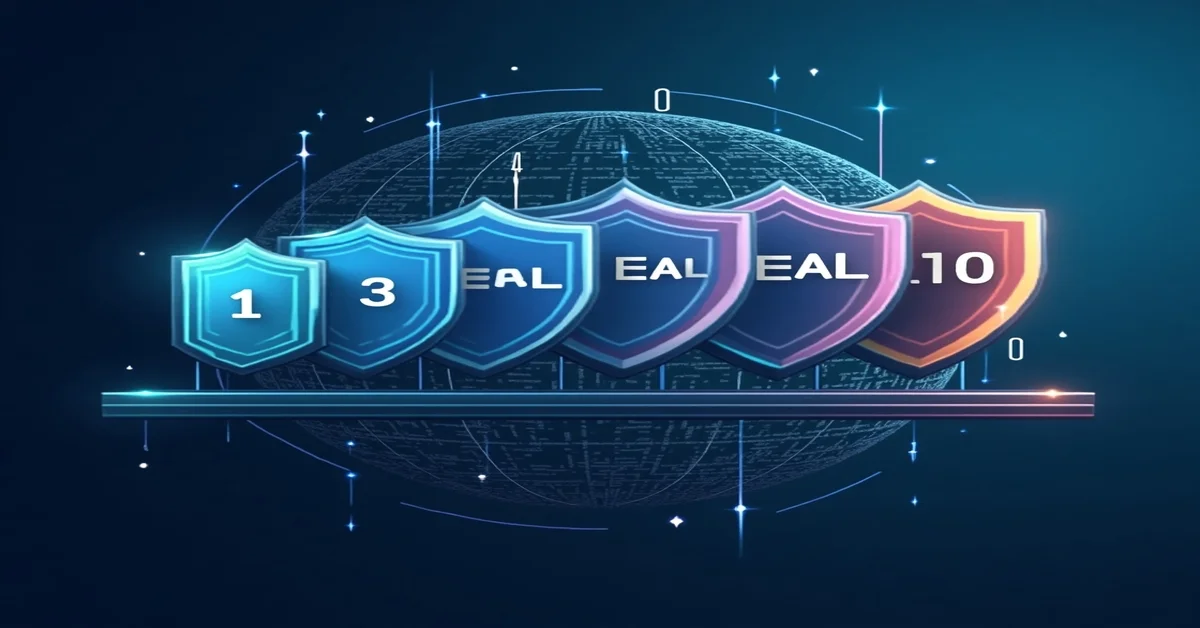Information technology and communications (often referred to as ICT) are a part of people’s daily lives, whether they realize it or not. Every time you send a WhatsApp message, watch YouTube or make a video call, you’re using these technologies. This article will explore the importance of information technology and communications, how they affect different areas of life.
What is Information Technology and Communications?
Information technology is the use of digital tools like computers, phones and software to manage, share, and store data. Communications technology focuses on how we send and receive that data whether by voice, text, video or email. Together, they create a powerful network that connects the world.
Simple examples:
- Using Google Maps to find directions
- Sending emails or WhatsApp messages
- Watching YouTube videos
- Attending online Zoom classes
- Using mobile banking apps
History and Evolution
ICT has grown from landline phones and floppy disks to cloud computing and artificial intelligence.
| Technology Era | Key Development | Year Range |
| 1st Generation | Mainframe Computers | 1940s–1950s |
| 2nd Generation | Transistors Replace Vacuum Tubes | 1950s–1960s |
| 3rd Generation | Personal Computers (PCs) | 1970s–1980s |
| 4th Generation | Internet and Mobile Devices | 1990s–2000s |
| 5th Generation | AI, Cloud, 5G, IoT | 2010s–Now |
Importance of ITC in Daily Life
People depend on ICT every single day. These tools help them stay connected from morning to night, save time, and accomplish tasks more efficiently.
Real life benefits:
- Checking the news or weather online
- Shopping on websites and apps
- Video chatting with friends or family
- Managing your finances with mobile banking
- Reading or watching online learning content
ICT and Global Internet Penetration
The world is becoming more connected. Here’s a basic chart to show internet use growth:
| Region | Internet Users (%) |
| North America | 92% |
| Europe | 89% |
| Asia | 67% |
| Latin America | 72% |
| Africa | 43% |
Role of Information Technology in Education
In schools, colleges, universities and online learning platforms, information technology and communications have completely changed how education works. Today’s students can access lessons anytime, anywhere.
ICT in education includes:
- Digital classrooms via Google Meet or Zoom
- E-learning platforms like Coursera and Udemy
- Online quizzes and interactive videos
- Group projects using Google Docs or Microsoft Teams
- Smart boards and multimedia presentations in schools
How Information Technology Improve
Businesses?
Businesses use ICT to grow faster, serve customers better and make smarter decisions. Whether it’s a local store or a global company, everyone uses these tools.
ICT in business helps with:
- Online customer support (emails, chatbots)
- Marketing through Facebook, Instagram, and Google Ads
- Safe and fast online payments
- Managing staff and projects using digital tools
- Collecting customer feedback and improving services
Using the right technologies, even a small home-based business can become a global brand.
Impact of IT in Healthcare
Healthcare has become faster, safer, and more reliable because of ICT. From online appointments to health tracking apps, information technology and communications are improving lives.
Key features in health:
- Online doctor consultations and e-prescriptions
- Medical record storage in digital form
- Fitness tracking with smartwatches or health apps
- Hospital management systems
- Global research and data sharing between doctors
How Governments Use Information Technology and Communications?
Governments around the world use ICT to provide better services to citizens. It increases transparency, saves time and makes public systems more efficient.
Examples of government use:
- Filing taxes or applying for services online
- National ID systems and biometric verification
- Online complaint and help centers
- Emergency alerts through mobile networks
- Election management and public announcements
Digital governance is making countries smarter and more connected.
Internet: The Heart of ITC
The internet is the most powerful part of ICT. It connects everything , from your phone to offices, shops, schools and hospitals. Without it, most technologies wouldn’t work.
What the internet allows:
- Instant messaging, calling, and video conferencing
- Watching movies or attending webinars
- Sending files and storing data on the cloud
- Running e-commerce websites
- Using smart devices at home
The internet makes global communication easy and instant.
The Role of Cloud Computing in ICT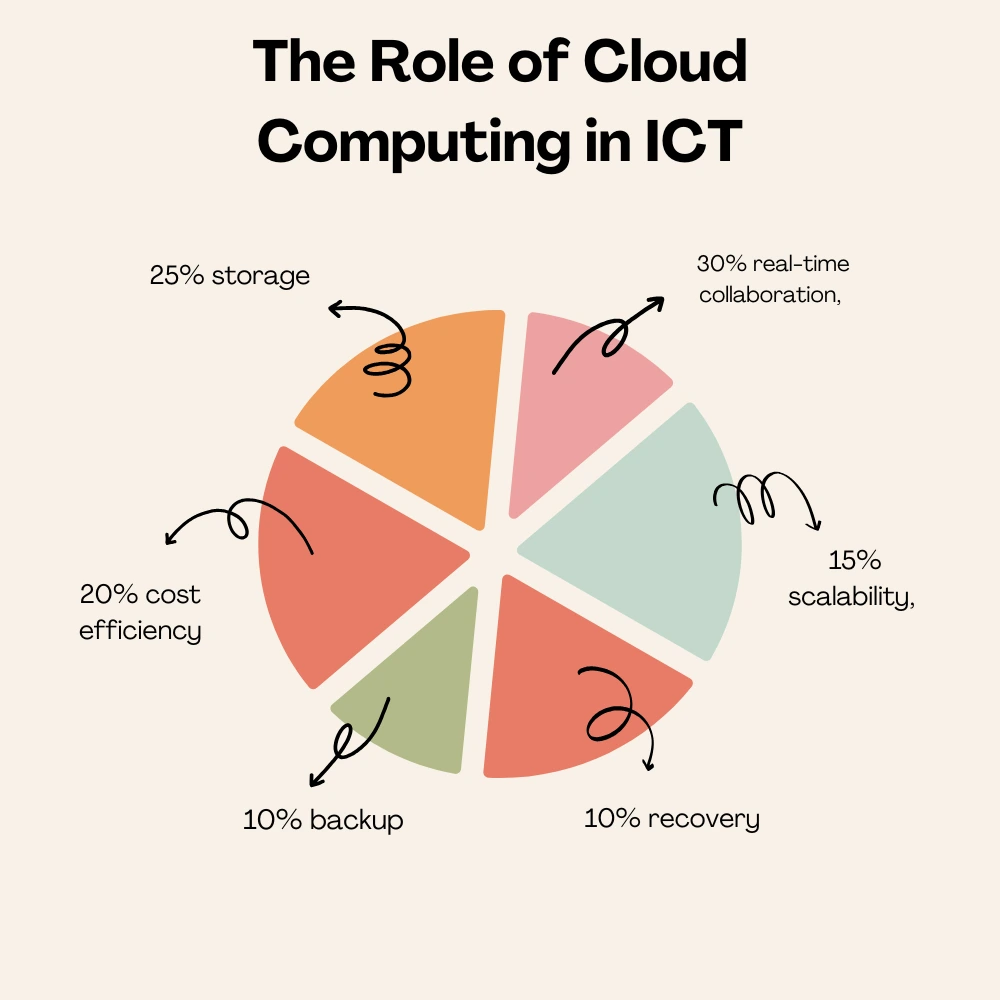
Cloud computing allows users to store data and run programs over the internet instead of using local computers or servers.
Key Advantages:
- Scalable data storage
- Remote work and learning access
- Real time collaboration via tools like Google Drive or Microsoft Teams
- Data backup and disaster recovery
Challenges in ITC
While there are many benefits, ICT also comes with some challenges. People and companies must protect their data and stay informed.
common problems:
- Cybersecurity threats and hacking
- Fake news and misinformation
- Internet addiction and screen overuse
- Privacy risks on social media
- Poor access in remote or rural areas
Awareness, education, and digital tools can help reduce these risks.
Cybersecurity in the Age of ICT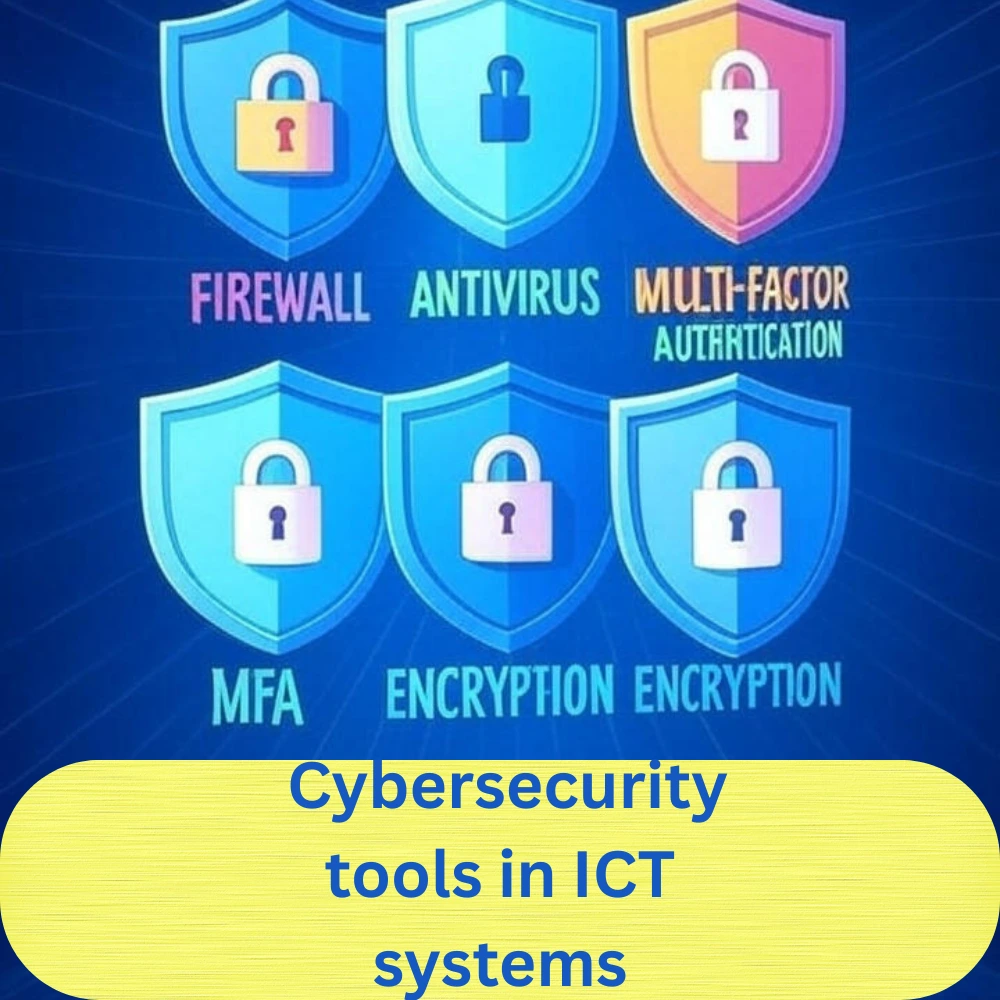
With the growth of ICT, cybersecurity is more important than ever. Businesses and individuals need to protect personal data from hackers, phishing attacks and malware.
Essential Cybersecurity Tools:
- Firewalls
- Antivirus Software
- Multi Factor Authentication (MFA)
- Virtual Private Networks (VPNs)
- End-to-End Encryption
AI and Machine Learning in ITC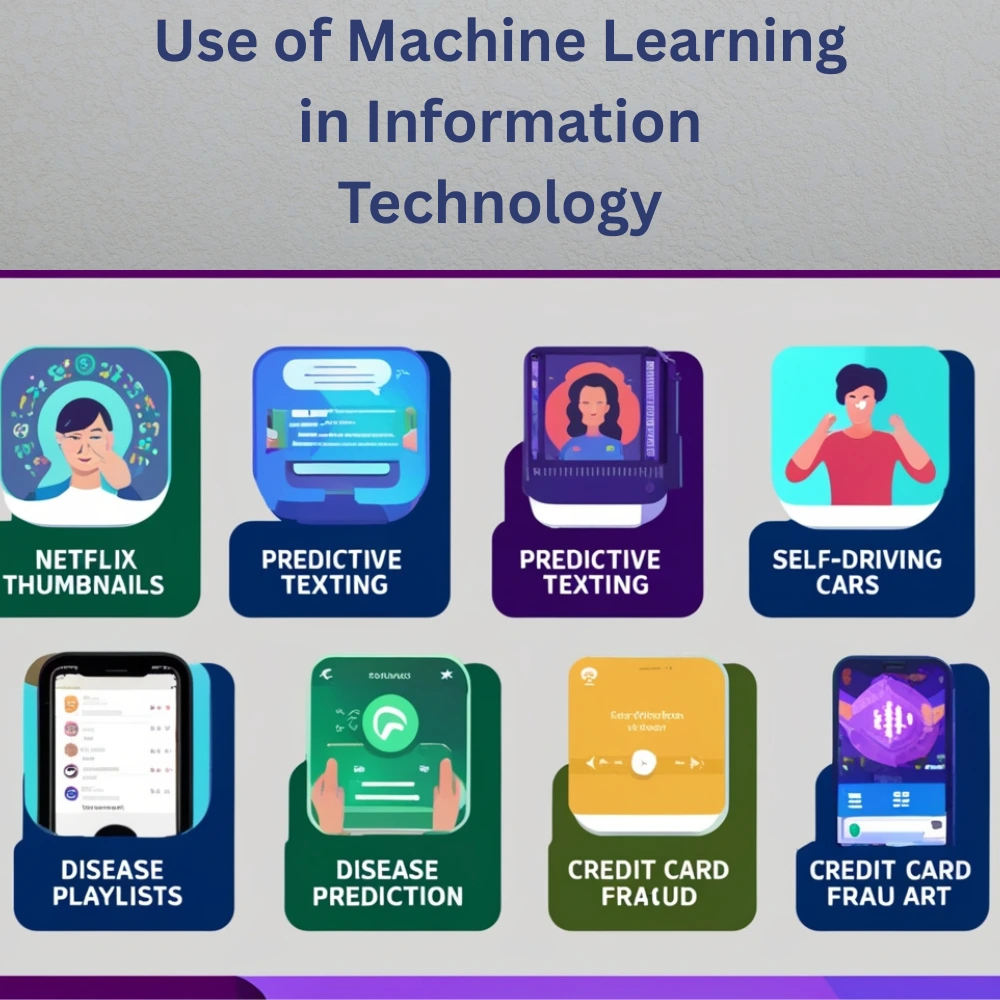
Artificial Intelligence (AI) and Machine Learning (ML) are changing how we use information technology and communications. These technologies allow machines to “think” and “learn” from data without needing step by step instructions.
AI and ML are helping in every part of information technology and communication systems. Here are some common uses:
- Chatbots for 24/7 customer support
- Spam filters in email systems
- Voice recognition for digital assistants
- Smart security cameras that detect motion or faces
- Predictive typing in messaging apps
- Speech to text for people with disabilities
- Real time translation tools like Google Translate
Future Outlook
Technology never stops growing. New advancements in artificial intelligence (AI), machine learning and 5G networks are shaping a smarter and more connected world.
Coming innovations:
- Faster and cheaper internet with 5G
- AI assistants like ChatGPT and Siri getting smarter
- Virtual classrooms and offices using VR/AR
- Smarter homes with voice control
- Robots helping in hospitals and factories
The future of ICT is full of endless possibilities.
Final Words
From personal life to education, business, and healthcare, information technology and communications are part of everything we do. Understanding them helps you use tools better, stay safe online, and grow in your career or personal life.
